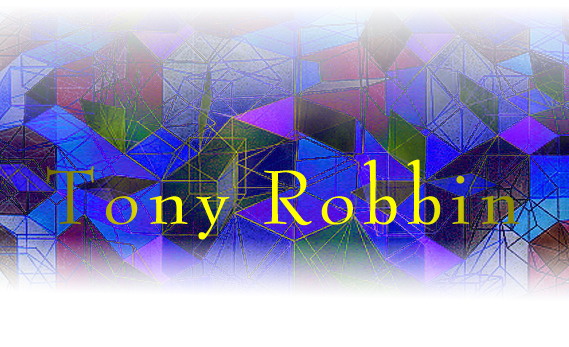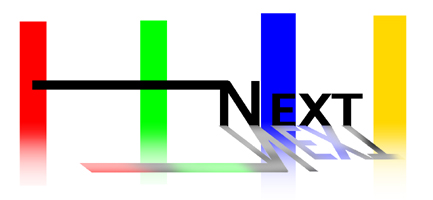
Beauty in things exists in the mind which contemplates them.
-David Hume
The fourth-dimension: his work project
Although his roots and early work concentrated, rather solely, on the influences
of Oriental art, Robbin's work grew in scope in the late 70s/early 80s when
he began to focus on the concepts on higher-dimensionality. These ideas,
for which he is best known as an artist and author, transformed from interstes
to plans when Robbin met with Thomas Banchoff in 1979. Banchoff introduced
him to "computer-genereated four-dimensional geometry." Robbin
was fascinated by the idea of another space. Even though mathematicians
and artists alike had been working with the notions of the fourth-dimension
for over a century, computer imaging was opening new doors and making the
fourth-dimension readily accessible.
At the heart of Robbin's theories were the two methods of representing higher
dimensionality: rotation and projection. The question was how to resolve
these ideas and, through art, give the viewer the experience of the fourth
dimension. As any painting is, basically, two dimensional, the dilemma was
how to utilize rotation to communicate and give a sense of objects in the
fourth-dimension. Robbin set up a rule and devised a solution. The rule:
Since planar rotations is the single most important property of four-dimensional
figures , and is, in fact, the only way we can distinguish four-dimensional
figures form merely intricate three-dimensional figures, works of art that
propose to be four-dimensional must embody planar rotation. (p.33)
Furthermore, after months of planning and sketching, he found his solution:
I have discovered that by using a combinations of two and three- dimensional
objects, taken together as a single entity, the visual information of planar
rotation can be presented and the fourth dimension brought out of the computer.
The strategy is to depict hypercubes, individual cells of which are made
with painted lines on canvas and others of which are sculpted in welded
steel rod of the same thickness and color as the painted lines. The three-dimensional
cells parallax (have a changing aspect as you walk around them). But the
two-dimensional cells (which are perceived as three-dimensional elements)
do not parallax; they remain fixed and only seem to move relative to the
sculpted cells. The viewer sees a figure that partially rotates and partially
does not, a property of planar rotation familiar to us from computer-generated
rotations. 33
Wtih a concrete plan in hand, Robbin set out not only to accomplish this,
but to "celebrate" his "discovery with a gigantic work."
He created Fourfield, a giant 8.5 x 27 foot piece.

Fourfield (1980-1981) Detail

Fourfield Grid
Fourfield and other works of this period relied on the
viewer, depending on his/her position and motion in relation to the artwork,
to experience the fourth-dimension.
Expanding on the ideas in Fourfield is his piece, Lobofour..
The basic idea is the same with one twist: Lobofour has a negative
curvature. Negative curvatures were first studied by the nineteenth-century
Russian mathematician Nikolai Lobachevsky.

Lobofour (1982)

Lobofour Grid
In Lobofour the map-coloring problem is solved in an original way. By
distorting the angles, but not the edge lengths, of the four-sided figures
could absorb the shock, as it were, of the shrinking rule an thus maintain
both the non-Euclidean tessellation and a consistent map coloring.....To
some extent the legibility of the hypercube was sacrificed for the non-Euclidean
distortion, and simpler parts of the hypercube had to be used. To my knowledge,
this painting is the first attempt to build a model of the visual information
of a four-dimensional, negatively curved field. 105

